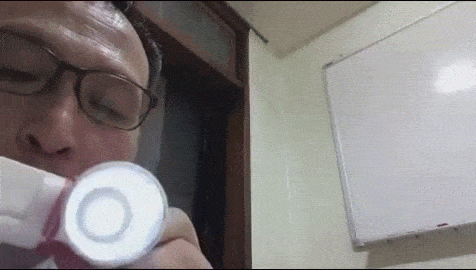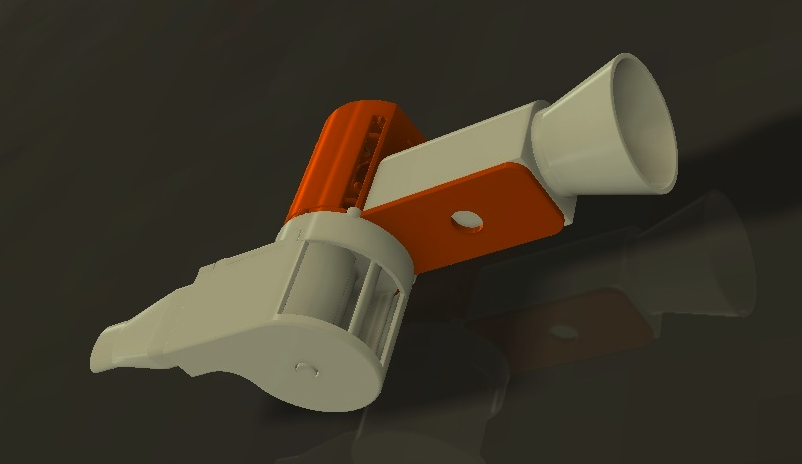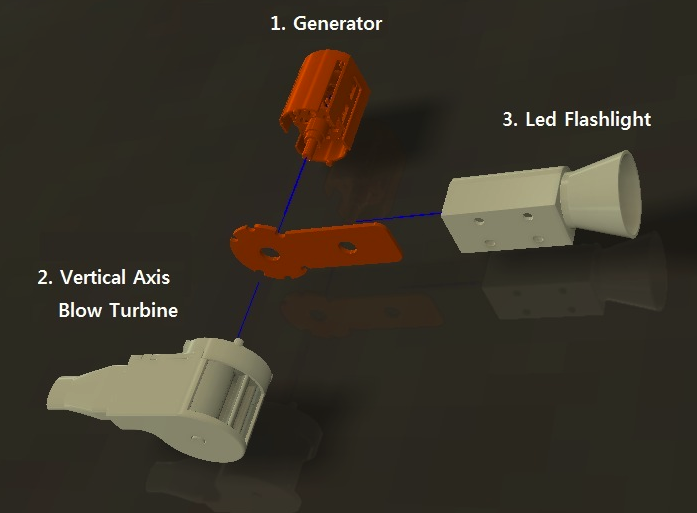 Don’t you just hate it when the power goes out in your house, you race to the closet to grab your handy-dandy flashlight, go to turn it on but discover that the batteries have completely died? This has happened to me on more than one occasion, and surely I’m not the only one to fall victim to the infamous powerless flashlight.
Don’t you just hate it when the power goes out in your house, you race to the closet to grab your handy-dandy flashlight, go to turn it on but discover that the batteries have completely died? This has happened to me on more than one occasion, and surely I’m not the only one to fall victim to the infamous powerless flashlight.
When MakerBot launched their “Catch The Wind Challenge” back in June, they had hoped to encourage engineers and designers from around the world to come up with some unique 3D printed creations that would “harness the power of the wind”. When one South Korean man, named Tim Cho heard of the challenge, he began thinking about how he could modify a flashlight design he had been working on, in order to qualify to win the First Place prize of a MakerBot Replicator 3D Printer.
“I was designing and printing a hand-winding crank LED Flashlight like Dynamo,” Cho tells 3DPrint.com. “I wanted to create something for the #CatchTheWind Thingiverse Challenge, but there were already many wind-powered flashlights. So I thought I could use ‘blow power’ instead of wind power, kind of like a whistle.”
So Cho began modeling the 3D printed components for his unique flashlight using Autodesk Inventor. He created 15 individual 3D printable parts which each took approximately 30 minutes to print out at a layer height of 0.2mm and an infill density of 25%. After spending about 7:30 hours printing out all of the parts, he then assembled them, along with some additional electronic components which included: coils, magnets, a bridge rectifier, an LED, some wires, and more.
As for how this battery-less flashlight works, Cho explains:
“When you strongly blow in through the mouthpiece, the vertical axis turbine and the magnets of the generator are rotating together. The shafts of the turbine and generator are directly connected. Then the coils of the generator makes AC (alternating current). The bridge rectifier circuit converts an AC input to a DC output. By blowing, the voltage generated creates about DC 0.5~1 volts. To light up an LED though, you need about DC 3 volts. For boosting voltage, I used a Joule thief circuit.”
Cho, who is currently unemployed, says that he is still learning about what his 3D printer can and can not do, and has been running into a lot of bumps along the way. If there is one downside to using this flashlight, he says that it is the fact that after a while, you get a little lightheaded from blowing so much. Currently the design files for this unique flashlight can be downloaded for free from Thingiverse. Check out the video of the flashlight in action below.
Subscribe to Our Email Newsletter
Stay up-to-date on all the latest news from the 3D printing industry and receive information and offers from third party vendors.
Print Services
Upload your 3D Models and get them printed quickly and efficiently.
You May Also Like
Nikon SLM Solutions Sells SLM 500 to Primary Weapon Systems to Expand Suppressor Production
Primary Weapons Systems (PWS) is a Boise, Idaho-based manufacturer of suppressors, firearms, and related components. A subsidiary of Vigilant Gear and a sister company to aftermarket Glock slide manufacturer Lone...
3DPOD 261: Tooling and Cooling for AM with Jason Murphy, NXC MFG
Jason Murphy´s NXC MFG (Next Chapter Manufacturing) is not a generalist service; instead, the company specializes in making tooling. Using LPBF and binder jet, the company produces some of the...
HP and Firestorm Labs Form Partnership to Use Multi Jet Fusion 3D Printers in Deployable Factories
HP Inc., maker of a range of additive manufacturing (AM) solutions including the Multi Jet Fusion (MJF) ecosystem, has announced a partnership with Firestorm Labs, a developer of containerized, deployable...
3D Printing News Briefs, July 2, 2025: Copper Alloys, Defense Manufacturing, & More
We’re starting off with metals in today’s 3D Printing News Briefs, as Farsoon has unveiled a large-scale AM solution for copper alloys, and Meltio used its wire-laser metal solution to...



































